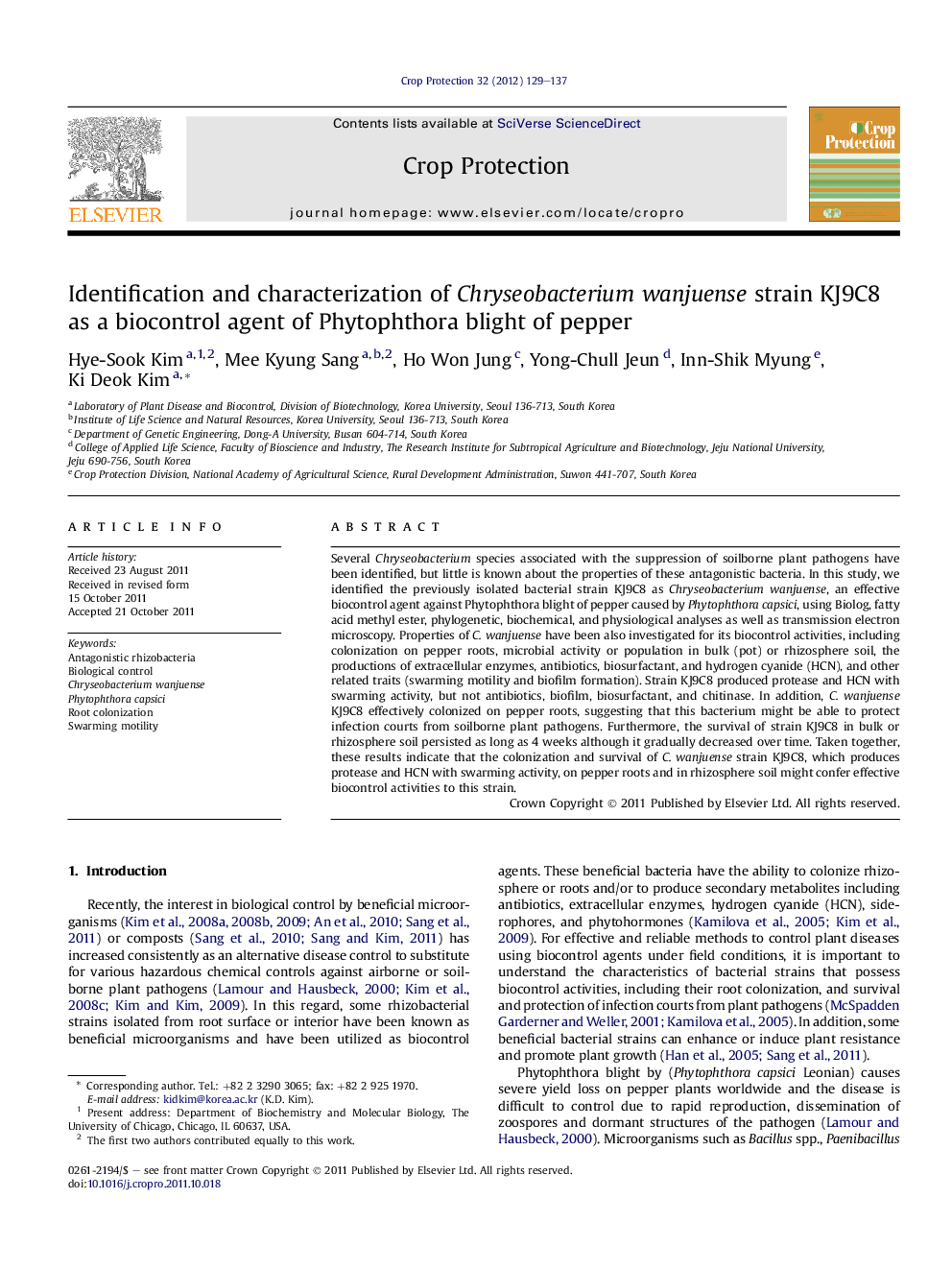| Article ID | Journal | Published Year | Pages | File Type |
|---|---|---|---|---|
| 4506459 | Crop Protection | 2012 | 9 Pages |
Several Chryseobacterium species associated with the suppression of soilborne plant pathogens have been identified, but little is known about the properties of these antagonistic bacteria. In this study, we identified the previously isolated bacterial strain KJ9C8 as Chryseobacterium wanjuense, an effective biocontrol agent against Phytophthora blight of pepper caused by Phytophthora capsici, using Biolog, fatty acid methyl ester, phylogenetic, biochemical, and physiological analyses as well as transmission electron microscopy. Properties of C. wanjuense have been also investigated for its biocontrol activities, including colonization on pepper roots, microbial activity or population in bulk (pot) or rhizosphere soil, the productions of extracellular enzymes, antibiotics, biosurfactant, and hydrogen cyanide (HCN), and other related traits (swarming motility and biofilm formation). Strain KJ9C8 produced protease and HCN with swarming activity, but not antibiotics, biofilm, biosurfactant, and chitinase. In addition, C. wanjuense KJ9C8 effectively colonized on pepper roots, suggesting that this bacterium might be able to protect infection courts from soilborne plant pathogens. Furthermore, the survival of strain KJ9C8 in bulk or rhizosphere soil persisted as long as 4 weeks although it gradually decreased over time. Taken together, these results indicate that the colonization and survival of C. wanjuense strain KJ9C8, which produces protease and HCN with swarming activity, on pepper roots and in rhizosphere soil might confer effective biocontrol activities to this strain.
► We identified bacterial strain KJ9C8 antagonistic to Phytophthora capsici. ► KJ9C8 was identified as Chryseobacterium wanjuense. ► KJ9C8 produced protease and hydrogen cyanide with swarming activity. ► KJ9C8 effectively colonized pepper roots to protect courts from pathogen infection. ► Survival of KJ9C8 in bulk or rhizosphere soil persisted as long as 4 weeks.
